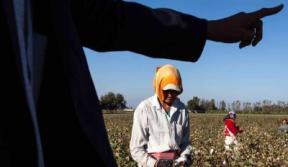Publication Date:
January 15, 2015
Source:
Centre for Workers’ Management
India is the largest producer of black tea globally, India also is the largest consumer of black tea. Global black tea production is highly concentrated, with India, Sri Lanka and Kenya together accounting for 60-62 per cent of the total black tea supply. Sri Lanka and Kenya export 90-95 per cent of their black tea output as the domestic market is miniscule. India, on the other hand, typically exports only 17-20 percent of its produce. India produces many types of tea such as CTC, Orthodox, Green tea, Organic Tea, Instant tea and other specialty teas to suit the tastes and preferences of domestic and international consumers.
However, nearly 90% of the tea produced in the country is of Crush, Tear, Curl (CTC) type because of its preference in the domestic market. The tea sector, the oldest organised industry in the country has 72% of the total area under tea cultivation and 74% of the total production in the organized sector with a total number of 1686 tea estates spread throughout the country. The remaining 28% of the area and 26% of the production is accounted for by the unorganized sector popularly known as small tea growers sector with more than 1.5 lakh holdings and the average size of the holdings being less than one hectare. According to the last industry report of the Tea Board in 20074, there were 159,190 tea plantations in India, comprised of small and large growers. At that time, India's tea industry employed 1.26 million workers, about 635,000 of them women. In West Bengal, tea plantations employ 262,039 workers. Apart from this, nearly a million workers are employed as
casual workers in gardens across the country.
With the industry facing deep decline in prices primarily due to expanded supply and sluggish demand in the 1990s, there has been a structural transformation of the industry both within the country and globally. In India, while many estates faced closure and abandonment across the country, the industry saw an increasing trend of emerging small growers, outside the legal domain of the Plantation Labour Act and other such legislation that protect the rights of the workers, along with the establishment of Bought leaf Factories (BLFs); and, globally, many new countries expanded and emerged as large tea producers, but the structure of the global supply chain increasingly got captured on the top by a few global corporations most notably, Unilever and Tata Tea. In the first decade of this century, consumer taste has led to a shift in production of tea around the globe.

